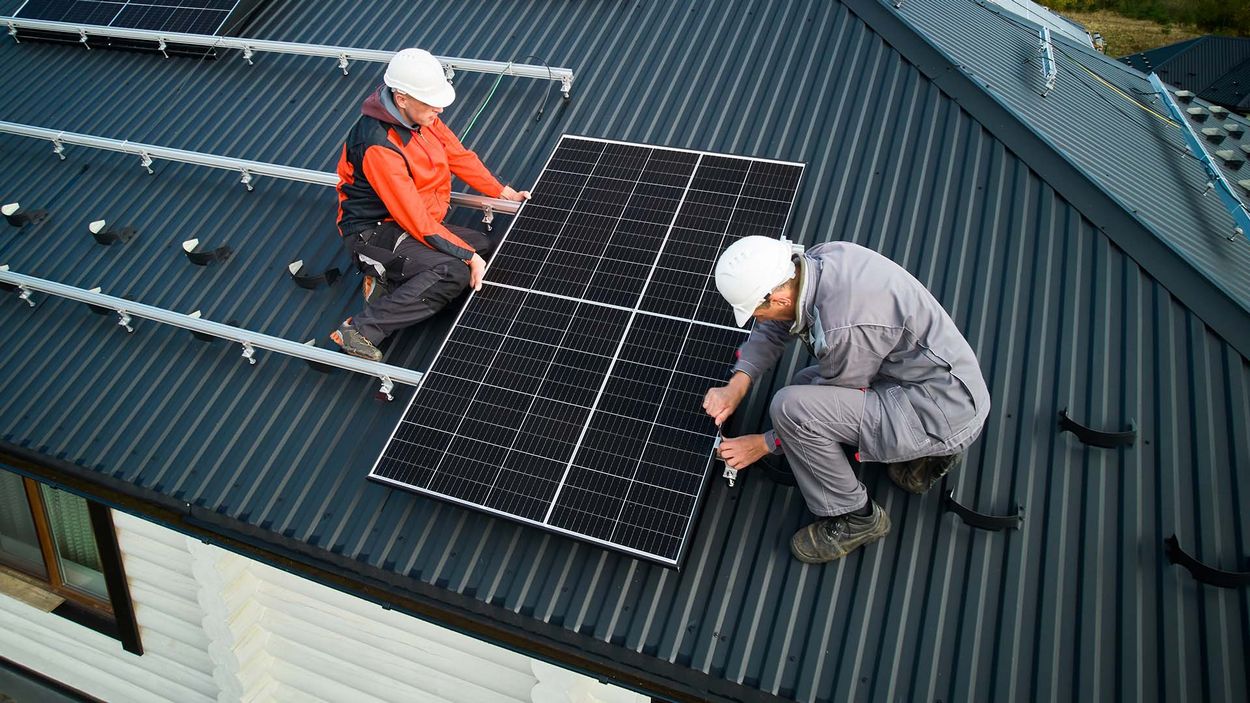Beginning with Energy Performance
Making the home energy-efficient before setting up a renewable resource system will certainly conserve cash on electrical power costs. Energy-efficiency enhancements can save power and prevent heat or amazing air from escaping. Home owners can obtain home energy evaluations and install correct insulation, air sealing, and power CELEBRITY- qualified windows, heating cooling tools, kitchen area home appliances, and illumination systems. Smart water usage, available daytime, proper landscape design, and native plants can also boost home performance.
Incorporate Renewable Resource
When home energy-efficiency improvements have actually been made, home owners are best positioned to think about alternatives for setting up a renewable energy system.
Geothermal Heat Pumps
Geothermal heat pumps, additionally referred to as ground source or water source heatpump, transfer warm into and out of the home, using the ground as both a warmth source and a warmth sink. These pumps can attain effectiveness 2 to 3 times above frequently utilized air source heatpump (ASHPs), because they rely on the reasonably consistent ground temperature levels to transfer warmth to or from a home. Throughout much of the United States, the temperature of the top 10 feet of the ground continues to be between 45deg; deg; F and 75 deg; F, and typically in between simply 50deg; deg; F and 60 deg; F.Read about renewable-energy-advisors.com At website By contrast, air temperatures can vary, over the course of a year, from below 0deg; deg; F to over 100 deg; F. Geothermal heat pumps are resilient and long lasting, and particularly furnished systems can likewise supply warm water throughout the summertime. While buying and setting up a geothermal heatpump sets you back more than installing an ASHP system with comparable capability, the extra expenses can be recovered via power savings in 10 to 15 years compared to ASHPs.
Solar Water Heating
Solar water heaters make use of sunlight to warm water for the home. Solar water furnace make use of insulated storage tanks and solar batteries to capture and retain warmth from the sun, and warm circulating water. Solar water heaters require a backup system, such as standard hot water heaters, when there wants sunlight.
Solar Power Systems
Solar photovoltaic (PV) systems transform sunshine right into electrical power. Solar power can produce all or several of a homes electrical energy requires, depending on the variety of solar panels utilized, and can heat water too. With enough sunlight, PV systems can harness energy in hot and cold climates. The standard foundation of a PV system is the solar cell. Multiple solar cells form modules called photovoltaic panels that vary in outcome from 10 to 400 watts. Panels are developed to make it through tornado and hail damage and are immune to degradation from ultraviolet rays. They are very trustworthy and need little maintenance. Panels are commonly grouped with each other on a structure rooftop or at ground level in a shelf to develop a PV range. The variety can be installed at a fixed angle or on a monitoring device that adheres to the sun to optimize sunlight capture.
Wind Energy Equipment
Little domestic wind energy systems can create all or some of a homes electricity needs(if adequate acreage and typical wind rates are readily available) and can be integrated with solar and battery storage space to supply emergency backup power. Wind turbines use the activity of the wind to transform a shaft attached to a generator, which makes electricity. The size of the generator and the rate of the wind determine how much electricity it will certainly make. Common household wind energy systems have power ratings varying from 5 to 30 kilowatts. To be an appropriate candidate for a wind system, a homeowner must have at the very least one acre of land and reside in an area that has an average yearly wind rate of at least 10 miles per hour. The turbine tower elevation need to be chosen based upon the height of nearby wind obstructions, such as buildings or plants, and are generally 60 to 140 feet high.
Estimated Costs
Federal and state incentives can significantly lower the in advance prices of installing a renewable resource system. The Data Source of State Incentives for Renewables Efficiency can help property owners locate incentives near them. And also, renewable resource systems can spend for themselves over time. Grid-connected solar and wind systems are especially cost-effective due to the fact that excess electrical power is returned to the power grid and can earn property owners direct discounts or credit scores from regional utility providers.
- Solar PV systems cost concerning $3 per watt installed. A 7,000 watt (7 kilowatt) system for that reason sets you back about $21,000 to install. Such a system would certainly offer 20 to 35 kilowatt-hours of electrical energy per day, depending on environment, and can fulfill a lot of a homes
- demand. Solar warm water systems can satisfy 50% of the hot water requires for a household of 4 and usually cost in between $5,000 and $7,000 to mount.
- Tiny wind energy systems set you back approximately $5 per 120 kilowatts to mount. Purchasing and mounting a system can vary from $10,000 to $70,000, relying on local zoning, allowing, and utility interconnection prices.
Selling Energy
Numerous homeowners can market any kind of excess energy their solar and wind systems create back to their utility service providers and, therefore, settle their renewable resource investments faster. A lot of states have established net metering regulations for clients who create excess electricity with solar, wind, or other systems and feed it into the grid. In net metering, a bi-directional meter documents both the electrical energy the home draws from the grid and the excess electrical energy the homeowners system feeds back right into the grid.

